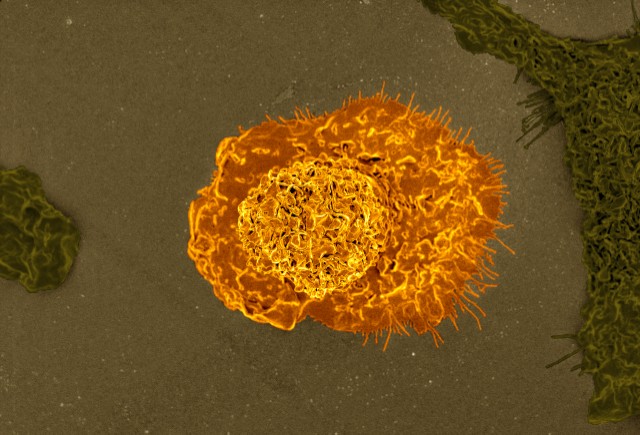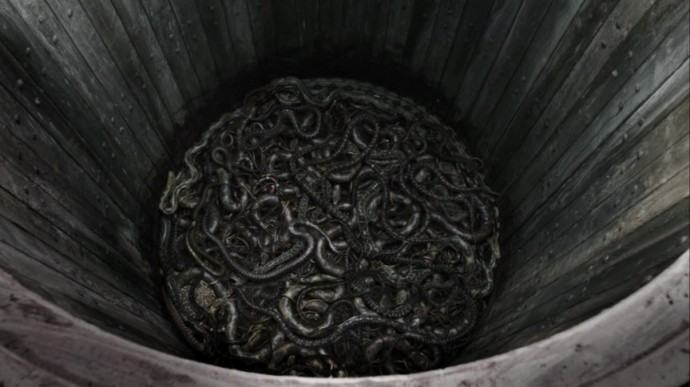The notion that diet plays a pivotal role in the regulation of metabolic syndromes such as chronic inflammation has gained such wide acceptance that we now find the once accepted food pyramid established decades ago where fats and meats occupied a small percentage of total daily food intake is now replaced by one where carbohydrate intake has been dramatically reduced. Depending on the type of diet you are following, you may be consuming little to no carbohydrates and sugars, fruits and/or vegetables. You may also be consuming a high amount of animal protein from meats and/or fish, or your diet could comprise of mostly fats, as in the case of ketogenic (keto) diets.
The Ketogenic Diet is a high-fat/low-carbohydrate/adequate-protein diet. It has gained tremendous popularity because of proven anti-inflammatory actions via the suppression of glucose utilization. It has yielded impressive results in treatments for neuropathic pain, brain inflammation, or even weight loss accomplished via various mechanisms yet to be confirmed [1, 2, 3]. The ketogenic diet has been used since 1920 at John Hopkins to manage epilepsy in children. Recently, the ketogenic diet has been discovered to be effective against tumorigenesis in various cancer therapies [4]. It is believed to be effective against tumor progression because it is able to target the Warburg effect where cancer cells, in contrast to normal cells, mainly use aerobic glycolysis instead of oxidative phosphorylation (OXPHOS) in mitochondria to produce lactate. Lactate is the main energy substrate used by cancer cells for immune suppression and pH manipulation [28]. In an environment where circulating glucose levels are reduced under ketosis, cancer cells are hypothetically ‘starved’ of energy and unable to utilize lactate, while normal cells switch their metabolism to ketones generated by the ketogenic diet [5].
In preclinical evidence documenting the effects of ketogenic diets on tumor growth and progression, however, the association between ketogenic diets and tumorigenesis was not as straightforward as originally postulated. Data from multiple studies showed a range of effects on tumor growth. In some studies, the keto diet was anti-tumor, while in others there was no effect. In some cases, severe side effects or even pro-tumor effects resulted. It appears that whether the keto diet works or not depends upon the type of tumor being investigated and how the immune system responds to the diet. The best results were achieved in glioblastoma, and the worst in kidney cancer with a 50/50 outcome of pro-tumor/severe side effects. Melanoma treated with ketogenic diet also produced a 50/50 outcome of pro-tumor/no effect [5].
From Food to ATP: Understanding Mitochondrial Energetics and Cancer
When we eat different foods, they are broken down into smaller molecules like glucose, proteins and lipids before our cells can use them as fuel for energy, or as substrates for other molecules. When glucose is metabolized for fuel in our body, it is first converted into pyruvate in the cytosol, the liquid matrix within cell membranes. The classic view of pyruvate follows two paths: when there is a lack of oxygen, our body turns pyruvate into ATP via fermentation in the process of glycolysis. In the presence of oxygen, pyruvate enters the mitochondria and undergoes oxidative phosphorylation (OXPHOS) to create ATP. Ketogenic diets supply our body with foods high in fats. Fatty acids are converted into acetyl-CoA in the mitochondria and undergo oxidative phosphorylation to create ATP. Neither fatty acids nor protein undergo glycolysis directly in the generation of energy [15].
Cancer cells mostly derive their energy from glucose via glycolysis in the presence of oxygen. This unusual preference was first observed in 1956 by Otto Warburg who called this effect aerobic glycolysis, or what is now known ubiquitously as the Warburg Effect. Cancer cells thrive due to their ability to flexibly adapt their metabolism to increase their proliferation rate in the face of changing environments. The Warburg Effect refers to the unique trait of cancer cells to select glycolysis even in the presence of ample oxygen. This process of glycolysis used by cancer cells takes place in the cytosol of cells, where glucose is turned into pyruvate to yield ATP (energy). The process of glycolysis also results in the generation of nicotinamide adenine dinucleotide (NAD) in its reduced form NADH, as well as lactate [25]. How cancer cells manipulate these two important substrates to their advantage will be discussed later.
It is accepted that glycolysis yields two molecules of ATP per glucose molecule, and oxidative phosphorylation yields up to 38 molecules of ATP per glucose molecule. Whereas depending on the type of fatty acid, fatty acid oxidation can yield over 100 ATP molecules per fatty acid. The incorporation of ketogenic diet to curtail the growth of tumors seems like an excellent strategy, as it could sidestep the Warburg Effect, while providing ample units of cellular energy. However, fatty acid oxidation in the ketogenic diet also initiates an immune response, one that can be either pro- or anti-inflammatory, or both.
Ketogenesis, Inflammation, and Cancer
One of the main attractions of the ketogenic diet is the ability to reduce the symptoms or even reverse chronic inflammatory diseases. Injury triggers inflammatory responses, and recovery is the successful healing conclusion achieved via anti-inflammatory responses. Chronic inflammatory diseases are basically the result in the failure to resolve initial inflammatory responses. The traditional understanding is that glycolysis drives inflammation, and fatty acid oxidation (FAO) is always anti-inflammatory. In general, non-resolving inflammation in a tumor microenvironment is the hallmark of cancer [26]. In fact, classic healing cycles begin with injury and end with recovery [27] . Proinflammatory responses are associated with enhanced glycolytic activity and breakdown of the mitochondrial tricarboxylic acid cycle (TCA). Hence, ketogenic diet is considered anti-inflammatory because it mainly uses fatty acid oxidation in the generation of energy in the mitochondria without the involvement of glycolysis [7].
Macrophage Metabolism, Inflammation, and Tumorigenesis
An interesting ongoing development in the study of immunology is the role played by intracellular metabolism as the regulator of the fate and function of cells of the immune system. The latest studies are now focused on how the polarization of macrophages and the modulation of their properties are affected by energy metabolism[22]. Macrophages are phagocytic cells present in almost all tissues. Macrophages are produced from bone marrow-derived blood monocytes, and are very much a part of our innate immune system. Macrophages play an important role in the initiation and resolution of inflammation. Depending on the signals they receive, macrophages can be pro-inflammatory, classified as M1, or anti-inflammatory, classified as M2. In cancer, macrophages can both increase and decrease tumor growth depending upon the type of tumor and type of macrophage involved. Interestingly, diet plays a role in determining the type of macrophage likely to be activated. There are two types of macrophages.
- M1 macrophage metabolism is characterized by glycolysis, the pathway associated with cancer and often with the consumption of high carbohydrate diets. M1 macrophages have been associated with high levels of pro-inflammatory cytokines such as IL6, IL12, IL23, and tumor necrosis factor-α (TNF-α). M1 macrophages are able to produce substantial levels of reactive oxygen and nitrogen species, and are therefore, highly microbicidal and tumoricidal. Mitochondrial reactive oxygen species (mROS) are the key regulators of these M1 classically activated macrophages [8].
- Conversely, M2 macrophage metabolism is characterized by fatty acid oxidation, producing ATP (energy) via oxidative phosphorylation. Unlike M1, M2 macrophages are associated with anti-inflammatory, tissue repair and resolution of inflammation, and are classified as alternatively activated macrophages. M2 macrophages are activated by Th2 cytokines like interleukin IL-4, IL-10, and IL-13 [9].
Recent research has discovered that these metabolic pathways are closely interconnected. Any attempt to define glycolysis as pro-inflammatory or fatty acid oxidation (FAO) as anti-inflammatory may be an oversimplification. Studies now demonstrate the need for glucose metabolism in anti-inflammatory as well as inflammatory macrophages, and that fatty acid oxidation (FAO) supports not only anti-inflammatory responses but also drives the activation of inflammatory macrophages [8].
M1 macrophages, being ‘pro-inflammatory’ are now identified as critical components involved in anti-tumor immunity, whereas M2, the macrophages traditionally viewed as anti-inflammatory, are now associated with tumor growth responses. Research now demonstrates that the infiltration of M2 macrophages can account for more than 50% of the tumor mass in some cancers. M2 type macrophages aid in metastasis by inducing angiogenesis (the development of new blood vessels), and the presence of M2 macrophage usually signify a poor prognosis for cancer survival. These macrophages that migrate to tumor sites and aid in angiogenesis and metastasis are called tumor-associated macrophages (TAMs) and they express a distinct M2 phenotype [10].
The Role of the Ketogenic Diet in Cancer
Two fundamental keys to understanding how the ketogenic diet affects tumorigenesis are the NADH:NAD+ ratio, and the access to lactate.
Lactate and Cancer
Cancer cells rely on glycolysis for energy even in the presence of oxygen, forsaking increased ATP energy production via oxidative phosphorylation (OXPHOS) in the mitochondria, in exchange for just 2 molecules of ATP and lactate. Lactate is a critical substrate for cancer cells, because it is used to generate lactic acid. Cancer cells remove one proton (H+) from lactate to produce lactic acid. Lactic acid produced by cancer cells has been found to play critical roles in their growth and proliferation. Cancer cells use lactic acid as an immunosuppressant as well as the promoter for angiogenesis, cell migration and metastasis. Lactic acid is also used by cancer cells to change the phenotype of M1 macrophages into the tumor-associated macrophage M2 [20, 21].
The level of lactate in tumor cells has been found to be highly correlated to the malignancy of tumors. Researchers discovered that some of the most malignant tumor lines tested were the ones that yielded the highest concentrations of lactate. Lactic acid produced by tumor cells during glycolysis is capable of generating signals that can induce the expression of the potent angiogenic factor Vascular Endothelial Growth Factor (VEGF) and the M2-like polarization of tumor-associated macrophages (TAMs) [21]. In addition, lactic acid from tumor cells has been found to inhibit pro-inflammatory cytokines, and the activation of T-cells.
“Lactic acid suppressed the proliferation and cytokine production of human cytotoxic T lymphocytes (CTLs) up to 95% and led to a 50% decrease in cytotoxic activity” [32].
Ketones and Lactate: A Misunderstood Relationship
The main premise for using Keto diets in cancer therapies is its ability to simulate the natural state of fasting, where the body breaks down stored body fat to produce ketones for energy when food is not available. Hypothetically, the burning of fats in Keto diets will reduce the flux of glucose through glycolytic pathways that are favored by cancer cells in the generation of energy and critical substrates like lactate [29].
We already know that lactate is an important substrate for cancer cells. But how effective are Keto diets in suppressing lactate formation? One would think that since glucose consumption is significantly reduced in Keto diets, lactate production levels should also decline.
Let us take a look at glioblastoma, where Keto diets have been reported to have a high success rate. Our brains are able to use ketones as fuel. Keto diets can supply adequate fuel to our brains via ketones when glucose is not available. Keeping the level of blood glucose low may sound quite attractive as it has been reported that “hyperglycemia is associated with adverse prognosis and postoperative function loss in GBM (glioblastoma multiforme) patients” [30]. Does that mean that if one can artificially reduce blood sugar levels by implementing Keto diets, the prognosis for glioblastoma patients will improve? The answer may surprise you, but not if you understand that lactate is also an important substrate for cell survival in normal non-cancerous cells.
A study on the effects of low carbohydrate/high fat diets and high carbohydrate/low fat diets in ultra-endurance athletes revealed that plasma glucose and serum insulin were not significantly different between the two groups when they were at rest and also during exercise. There was no significant difference between the two groups in insulin resistance as determined by HOMA (a homeostatic model assessment of beta cell function and insulin resistance). However, serum lactate increased by twofold during the last hour of exercise training in the group of athletes consuming a low carbohydrate/high fat diet. The researchers found that all athletes in the low carbohydrate/high fat group broke down substantially more glycogen in their muscles than the total amount of carbohydrate oxidized during the 3 hour run. Why were muscles broken down for glycogen when substrates like fatty acids were readily available to the athletes on Keto diets? Obviously these glycogen were not used for energy production because they were not oxidized. The researchers believed the glycogen were a necessary source for the production of lactate [31].
Our bodies are very adept at maintaining homeostasis. When glucose availability is limited by diet, our bodies can produce glucose from other sources like proteins and fatty acids. Gluconeogenesis is one of several main mechanisms used by humans and many other animals to maintain blood glucose levels. Gluconeogenesis uses non-carbohydrate substrates from lipids such as triglycerides to produce glucose in the liver [19]. Amino acids from protein, such as the glucogenic amino acids can also be converted into glucose through gluconeogenesis [18].
It is highly likely that the long-term consumption of a low-carbohydrate/high-fat diet leads to adaptations in our body to maintain homeostasis in the regulation of glycogen so as to preserve an environment that is similar to one maintained under high carbohydrate consumption [31]. Based upon these findings, it is perhaps necessary to re-examine the ability of the Keto diet to truly reduce access to lactate in cancer cells.
Is NAD+ the Double-edged Sword in Ketogenic Diets?
In recent years, NAD+ has been recognized as having neuroprotective qualities in addition to anti-inflammatory and anti-aging benefits [34].
NAD, or Nicotinamide adenine dinucleotide (NAD) is a coenzyme found in all living cells. It exists in two forms, NAD+, the oxidized form, and NADH, the reduced form. The main functions of NAD is to transfer electrons. NAD+ accepts electrons from other molecules to produce NADH, which then can donate electrons again to other molecules [24].
In the process of glycolysis, electrons are added to NAD+, resulting in the reduced form of NADH. Two molecules of NADH are formed per molecule of glucose during glycolysis. During oxidative phosphorylation (OXPHOS) these NADH molecules donate their electrons to form NAD+, which can then be used again for glycolysis [15]. When the metabolic pathways used is predominantly glycolytic, there will be an NADH excess because more NAD+ are consumed in the process.
A high NADH:NAD+ ratio in the cytosol is an indication of high glycolytic activity. Higher levels of NADH results in an increase of pro-inflammatory gene expression of macrophages with the M1 phenotype. Conversely, limited glucose availability as a result of diet restrictions can lower the NADH:NAD+ ratio. When there is more NAD+ to NADH, pro-inflammatory gene expression and responses are suppressed as a consequence [16].
Ketogenic diets are believed to be able to increase NAD+. Ketogenic diets have been found to significantly raise hippocampal NAD+ levels in studies on rodents, conferring neuroprotective benefits [17]. Having more NAD+ than NADH also leads to the suppression of glycolysis, which in turn will increase anti-inflammatory macrophage responses that can reduce brain inflammation, tissue loss, and functional impairment after brain injury [16]. In terms of understanding how the NADH:NAD+ ratio relates to the two macrophage phenotypes, a simple way is to remember that:
- Low NADH, high NAD+ = Anti-inflammatory, tumor-promoting macrophage (M2)
- High NADH, low NAD+ = Pro-inflammatory, tumor-suppressing macrophage (M1)
A low NADH:NAD+ ratio (low level of NADH but high level of NAD+) is pro-tumor. Cancer cells thrive when there is an abundance of NAD+. NAD+ is an essential coenzyme for aerobic glycolysis. A higher rate of glycolysis will reduce the amount of NAD+ available. Fewer NAD+ in turn slows down the rate of aerobic glycolysis. So the more cancer cells rely on glycolysis, the more NAD+ they require. It has been demonstrated that NAD+ levels are much higher in cancer cells compared to normal cells, likely due to an upregulation of NAD+ synthesis by cancer cells, [33] and the inhibition of the NAD+ metabolic pathways leads to enhanced autophagy and decreased survival rate of cancer cells [35]. When one employs a high fat diet to inhibit cancer growth via the limitation of access to glucose, the inadvertent generation of NAD+ is a factor that must be taken into consideration.
The Future of Macrophage Polarization
Cancer cells are able to circumvent our body’s natural immune defenses via many mechanisms. By manipulating lactate produced during aerobic glycolysis, lactic acid is used by cancer cells to induce the polarization of macrophage into the tumor-associated macrophage with distinct M2 phenotypes for growth and proliferation, chemotherapeutic resistance and immune evasion[37]. Ketogenic diets may limit the substrates available to tumors for use in glycolysis, but they are not able to suppress all the tactics used by cancer cells to create environments that are hospitable to their proliferation.
The type of diet we choose exerts significant influence on how macrophages are activated in our body. Depending on their activation status, macrophages can either facilitate tumorigenesis by antagonizing the cytotoxic activity of immune cells or suppress tumor progression by enhancing anti-tumor responses. Current strategies in the fight against cancer development show promise in the manipulation of macrophage responses via therapies that either block the recruitment or depletion of macrophages from the tumor; affect the polarization of the tumor-associated macrophage to an anti-tumorigenic phenotype; or the reactivation of immunostimulation[36]. Whichever therapy is employed in the manipulation of macrophage polarization, the incorporation of energy metabolism as part of the strategy may prove truly invaluable.
References
- Ketogenic Diets and Pain https://www.ncbi.nlm.nih.gov/pmc/articles/PMC4124736/
- Ketogenic Diet Suppresses Brain Inflammation https://www.ajpb.com/news/ketogenic-diet-suppresses-brain-inflammation
- Ketogenic Diet for Obesity: Friend or Foe? https://www.ncbi.nlm.nih.gov/pmc/articles/PMC3945587/
- Suppression of insulin feedback enhances the efficacy of PI3K inhibitors https://www.nature.com/articles/s41586-018-0343-4
- Ketogenic diet in cancer therapy https://www.ncbi.nlm.nih.gov/pmc/articles/PMC5842847/#r6
- Prevention of dietary fat-fueled ketogenesis attenuates BRAF V600E tumor growth https://www.ncbi.nlm.nih.gov/pubmed/28089569
- Polarizing Macrophages through Reprogramming of Glucose Metabolism https://www.sciencedirect.com/science/article/pii/S155041311200201X
- Reprogramming mitochondrial metabolism in macrophages as an anti-inflammatory signal https://www.ncbi.nlm.nih.gov/pubmed/26643360
- Mitochondrial Dysfunction Prevents Repolarization of Inflammatory Macrophages https://www.ncbi.nlm.nih.gov/pubmed/27732846
- Macrophage Polarization and Its Role in Cancer https://www.omicsonline.org/open-access/macrophage-polarization-and-its-role-in-cancer-2155-9899-1000338.php?aid=59055
- Macrophages in inflammatory multiple sclerosis lesions have an intermediate activation status https://www.ncbi.nlm.nih.gov/pmc/articles/PMC3610294/
- Macrophage Metabolism As Therapeutic Target for Cancer, Atherosclerosis, and Obesity https://www.ncbi.nlm.nih.gov/pmc/articles/PMC5350105/
- A high M1/M2 ratio of tumor-associated macrophages is associated with extended survival in ovarian cancer patients https://www.ncbi.nlm.nih.gov/pubmed/24507759
- Fatty acid oxidation in macrophage polarization https://www.ncbi.nlm.nih.gov/pmc/articles/PMC6033271/
- How Cells Obtain Energy from Food https://www.ncbi.nlm.nih.gov/books/NBK26882/
- Bioenergetic state regulates innate inflammatory responses through the transcriptional co-repressor CtBP https://www.nature.com/articles/s41467-017-00707-0
- Ketone-Based Metabolic Therapy: Is Increased NAD+ a Primary Mechanism https://www.ncbi.nlm.nih.gov/pmc/articles/PMC5694488/
- Catabolism https://courses.lumenlearning.com/boundless-microbiology/chapter/catabolism/
- Gluconeogenesis https://en.wikipedia.org/wiki/Gluconeogenesis
- Cancer-generated lactic acid: a regulatory, immunosuppressive metabolite? https://www.ncbi.nlm.nih.gov/pmc/articles/PMC3757307/
- Functional polarization of tumour-associated macrophages by tumour-derived lactic acid https://www.ncbi.nlm.nih.gov/pmc/articles/PMC4301845/pdf/nihms653004.pdf
- Mitochondria in the regulation of innate and adaptive immunity https://www.ncbi.nlm.nih.gov/pmc/articles/PMC4365295/#R64
- Glycolysis Is an Energy-Conversion Pathway in Many Organisms https://www.ncbi.nlm.nih.gov/books/NBK22593/
- https://en.wikipedia.org/wiki/Nicotinamide_adenine_dinucleotide
- Metabolic changes in tumor cells and tumor-associated macrophages: A mutual relationship https://www.ncbi.nlm.nih.gov/pubmed/29111350
- Targeting Inflammation in Cancer Prevention and Therapy http://cancerpreventionresearch.aacrjournals.org/content/9/12/895.full-text.pdf
- Metabolic features and regulation of the healing cycle—A new model for chronic disease pathogenesis and treatmenthttps://www.sciencedirect.com/science/article/pii/S1567724918301053?via%3Dihub
- Cancer-generated lactic acid: a regulatory, immunosuppressive metabolite https://www.ncbi.nlm.nih.gov/pmc/articles/PMC3757307/
- Ketogenic diets as an adjuvant therapy in glioblastoma (the KEATING trial): study protocol for a randomized pilot study https://www.ncbi.nlm.nih.gov/pmc/articles/PMC5704454/
- Investigating the Ketogenic Diet As Treatment for Primary Aggressive Brain Cancer: Challenges and Lessons Learned https://www.frontiersin.org/articles/10.3389/fnut.2018.00011/full
- Metabolic characteristics of keto-adapted ultra-endurance runners.https://www.ncbi.nlm.nih.gov/pubmed/26892521
- Inhibitory effect of tumor cell–derived lactic acid on human T cells https://www.ncbi.nlm.nih.gov/pubmed/17255361
- NAD+ salvage pathway in cancer metabolism and therapy https://www.sciencedirect.com/science/article/abs/pii/S1043661816311434
- NAD+ in aging, metabolism, and neurodegeneration http://science.sciencemag.org/content/350/6265/1208
- The NAD+ salvage pathway modulates cancer cell viability via p73 https://www.nature.com/articles/cdd2015134
- Macrophages as Key Drivers of Cancer Progression and Metastasis https://www.ncbi.nlm.nih.gov/pmc/articles/PMC5292164/
- Tumor-associated macrophages: implications in cancer immunotherapy https://www.futuremedicine.com/doi/abs/10.2217/imt-2016-0135?src=recsys&journalCode=imt
We Need Your Help
More people than ever are reading Hormones Matter, a testament to the need for independent voices in health and medicine. We are not funded and accept limited advertising. Unlike many health sites, we don’t force you to purchase a subscription. We believe health information should be open to all. If you read Hormones Matter, like it, please help support it. Contribute now.
















Hi Doris,
Nice article. Thank you. It connects well with one of the posts on my blog and I will add a link there.
Kind regards,
Daniel
Greetings Daniel,
Thank you so much for your kind words and the confidence. I have read your post on pH and cancer. Great work. Cancer is a reality for many in this modern high tech world. Your work is much needed. Blessings.
Doris does not say anything about thiamine in cancer. It is commonly deficient in cancer patients although it is unknown whether it is a primary effect in etiology or the result of treatment. However, it has been found in animal studies that low-dose thiamine administration stimulates the tumor, whereas it inhibits the tumor at high doses. Since thiamine and pyruvate are intimately linked, one cannot help wondering whether it has any relationship with the Warburg effect. It is worth remembering that Warburg thought that it was the cause, but research was diverted to studying the genes and the Warburg effect is now considered secondary. Since cancer cells ferment glucose in the presence of oxygen, it is an extremely bizarre reaction.
Derrick Lonsdale, you are absolutely correct regarding thiamine being a double-edged sword. It has been found to stimulate growth at low doses while it suppresses growth at high doses. The key to understanding how thiamine works is in the inhibition of PDH phosphorylation, which leads to reduced glucose consumption, lactate production, and reduced mitochondrial membrane potential. PDH is the thiamine-dependent enzyme pyruvate dehydrogenase. The reduced activity of PDH is a critical step supporting the enhanced glycolytic activity in cancer cells, because PDH limits the conversion of pyruvate to acetyl-CoA. The activity of PDH is regulated through reversible phosphorylation reactions controlled by pyruvate dehydrogenase kinase (PDK). Cancer cells inactivate PDH by phosphorylation, through the increased expression of pyruvate dehydrogenase kinases (PDKs). When PDK1 (one of the PDK isoforms) is knocked down, PDH activity and glucose oxidation are restored resulting in reduced lactate production and suppression of tumor growth. Overexpression of PDKs is also associated with chemoresistance. What is also important to note is that “PDH activity is also regulated by substrate and end product feedback. The products of the PDH reaction (NADH and acetyl-CoA) stimulate phosphorylation by PDKs, while an excess of substrates (pyruvate and ADP) or cofactor (thiamine pyrophosphate; TPP) inhibits phosphorylation”
You may be familiar with this study. https://www.ncbi.nlm.nih.gov/pmc/articles/PMC3963161/ This paper covers a lot of biologic effects of high dose thiamine treatment. The reduction of membrane potential as a result of high-dose thiamine treatment is what gives me slight pause, as the effect may be global. So probably a really targeted approach is necessary when employing high-dose thiamine against cancer.
Susan Nash, thank you for your kind words. I think you might be onto something relevant here.
The key word is actually Lactate. I briefly hinted at it in the article, that lactate is actually an important substrate for all cells inside the body. The study on lactate is ongoing and evolving rapidly.
But first, to answer your question regarding fermentation:
Yeast are known as facultative anaerobes. They are organisms that can undergo fermentation when deprived of oxygen.
There are two types of fermentation processes. One is alcohol fermentation where pyruvate is decarboxylated (CO2 is removed ) to form acetaldehyde. Hydrogen atoms from NADH and Hydrogen Protons are then used to help convert acetaldehyde to ethanol. The result of this is NAD+
The other type of fermentation is lactate fermentation where two pyruvates are converted to two lactic acid molecules, which ionize to form lactate. In this process two NADH and Hydrogen Protons are converted to two NAD+.
Our muscle cells can undergo this process of lactate fermentation when there is lack of oxygen.
Science is discovering that are so called lactate shuttles everywhere, even in the gut where microbiome is active. The study on the role of lactate and other products of fermentation in promoting health of the gut is still underdeveloped. For example, lactate has been discovered to be a signaling molecule, in addition to being a major energy source. Investigators have observed lactate to downregulate pro-inflammatory responses in intestinal epithelial and myeloid cells.
You may find this study to be of interest: https://www.ncbi.nlm.nih.gov/pmc/articles/PMC5072832/#pone.0164697.ref007
Thank you, that gives me some terms to research and I downloaded the article to read offline. I know just enough chemistry to be dangerous.
I don’t doubt my microbiome is a mess, I was born C-section and then had multiple bouts of pneumonia as an infant and young child in the 60s so probably lots of antibiotics. They did think I had allergies as a child but no way to diagnose that at the time and I was fine for most of my adult years before developing a ton of various allergies during and after menopause. I’ve seen some stuff that implicated yeast allergy to Crohn’s disease which my young cousin died of at age 22. I just wondered if the yeast allergy could imbalance my gut flora.
I’m looking forward to the day when medicine works more closely with diet and lifestyle changes to combat illness. The current model is really unfair to both the patient and the doctor. Most people put way too much responsibility on the doctor’s shoulder.
You are most welcome.
The use of antibiotics in children often lead to imbalances in the microbiome, affecting health and well being. It is very likely that the antibiotics changed the balance of your microbiome, leading to overgrowth in yeast. There is a tight homeostasis between the fungal mycobiome and the gut microbiota in healthy individuals. A disturbed balance results in aggravation of immune responses, or what is known as ‘dysbiosis’.
“Anti-bacterials can work to promote or inhibit pathogenic fungal growth (reviewed in [28]). It has been known for more than 30 years that anti-bacterial treatment, notably broad-spectrum antibiotics and antibiotics specific to anaerobic bacteria, cause differential effects on fungal susceptibility and predisposes patients to gastrointestinal infections by C. albicans [14,33,34]. The effect of antibiotics on the bacterial microbiome has been shown in that a treatment course of antibiotics induces changes in composition of the microbiota. In previous studies it was observed that it took at least 40 days from the start of treatment for microbiota to revert back close to their pre-treatment status [35,36]. In human patients, the use of broad-spectrum antibiotics that affect anaerobic bacteria are associated with increased yeast flora in the gut compared with antibiotics with poor anaerobic activity [34].”
Do take a look at this paper if you have time. https://www.ncbi.nlm.nih.gov/pmc/articles/PMC5343866/
Do you happen to know the details of how fermentation takes place in this statement “our body turns pyruvate into ATP via fermentation”? I have an IgE tested food allergy to bakers yeast and an environmental IgE allergy to candida. I am wondering if some of the metabolic problems I am having stem from the body making antibodies to yeast and thereby interrupting processes such as the fermentation you mention.
Great article, very helpful information. I’m pretty tired of having ketogenic diet pushed at me. They don’t work for me because I have lipid metabolism issues and wind up with a kind of reactive hypoglycemia long before ketones ever get genterated.